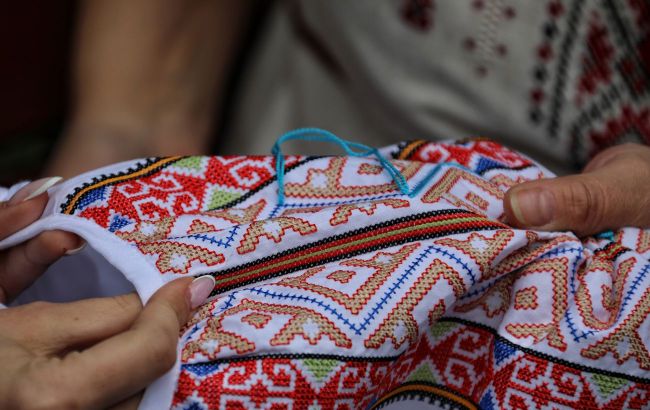'Prayer without words': What colors on Ukrainian vyshyvanka mean
 Each color on the vyshyvanka has a 'hidden meaning' (photo: Getty Images)
Each color on the vyshyvanka has a 'hidden meaning' (photo: Getty Images)
The World Vyshyvanka Day is celebrated annually on the third Thursday of May. This holiday is observed not only in Ukraine but also in many other countries around the world.
For more details on when exactly to celebrate Vyshyvanka Day, as well as what embroidered shirts symbolize for Ukrainians and their colors, read the article by RBC-Ukraine below.
When to celebrate Vyshyvanka Day in 2025
In general, calculating the date of World Vyshyvanka Day is not difficult. Just check the calendar and find the third Thursday of May.
This "fixed day," according to the organizers of the holiday, was chosen for many reasons.
The main reason is that Vyshyvanka Day should fall on a workday, as a reminder that the embroidered shirt has always been an integral part of Ukrainian life.
This year, World Vyshyvanka Day will be celebrated in Ukraine and around the world on May 15. It will be dedicated to the Ukrainian cultural heritage occupied by Russia.
What the Ukrainian vyshyvanka symbolizes
According to the information from the Ternopil Regional Methodological Center for Folk Art (TOMCNA), the vyshyvanka is the genetic code of a person:
- Ukrainian embroidery is called "a prayer without words,"
- and the embroidered shirt is considered the main protective charm of a person.
"Because the embroidered shirt has been used by Ukrainians for many centuries in everyday wear, while also being viewed as a talisman – a symbol of health and beauty. It is known that clothing closest to the body is your own shirt," the center explained.
It is noted that Ukrainians have the saying "to be born in a shirt" – to be happy in life.
"Therefore, the first vyshyvankas played not so much the function of clothing... The ornament protected their wearers from evil, bad eyes, misfortunes, and illnesses. That’s why shirts were decorated with patterns on the sleeves, collars, and hems – so that the design would touch the body," they explained to Ukrainians.
What different colors on vyshyvankas mean
The head of the Department of Folk Art and Methodological-Educational Work at TOMCNA, Lyudmila Pityk, explained that the energetic and informational functions performed by the embroidery on the national clothing of Ukrainians are unique.
It’s no wonder that our people have always treated the vyshyvanka as a sacred item. Embroidered shirts were preserved as relics, passed down from generation to generation, from family to family.
The red color of the vyshyvanka enhances energy and symbolizes happiness, love, abundance, and joy.
It is most often found on wedding shirts for men. However, such shirts were also worn by young women, who brought joy to those present with their beauty.
Black (in contrast to red) symbolizes sorrow, grief, and death.
Our ancestors could wear vyshyvankas of this color for funerals. However, in some regions, shirts with black embroidery were worn by elderly men.
"One of the most original black vyshyvankas is the Borshchiv one. This shirt is embroidered with black threads. There is a legend that when the Turks and Tatars destroyed almost all the men in Borshchiv, the women of this town and neighboring settlements wore such black-and-white shirts for several generations – as a sign of mourning and sorrow," Pityk explained.
White symbolizes love and innocence, joy and bright events, which is why vyshyvankas in these tones are considered festive.
The "white-on-white" embroidery technique (an artistic method where the relief pattern creates a play of light) was used as a contrast to the black color.
Green symbolizes the spiritual spectrum. It is associated with natural beginnings, considered to be a blessing, and promotes a peaceful life.
Sky-blue colors symbolize water, representing the feminine essence and purity. Therefore, they were most often worn by young women before marriage.
Yellow and gold stand out in embroidery as separate colors. They are interpreted as the colors of celestial fire, the colors of the Sun, symbolizing divine wisdom and wealth.
The following sources were used in preparing this article: the official portal of the NGO "World Vyshyvanka Day," the YouTube channel "Vyshyvanka Day," and the Facebook page of the Ternopil Regional Methodological Center for Folk Art.

